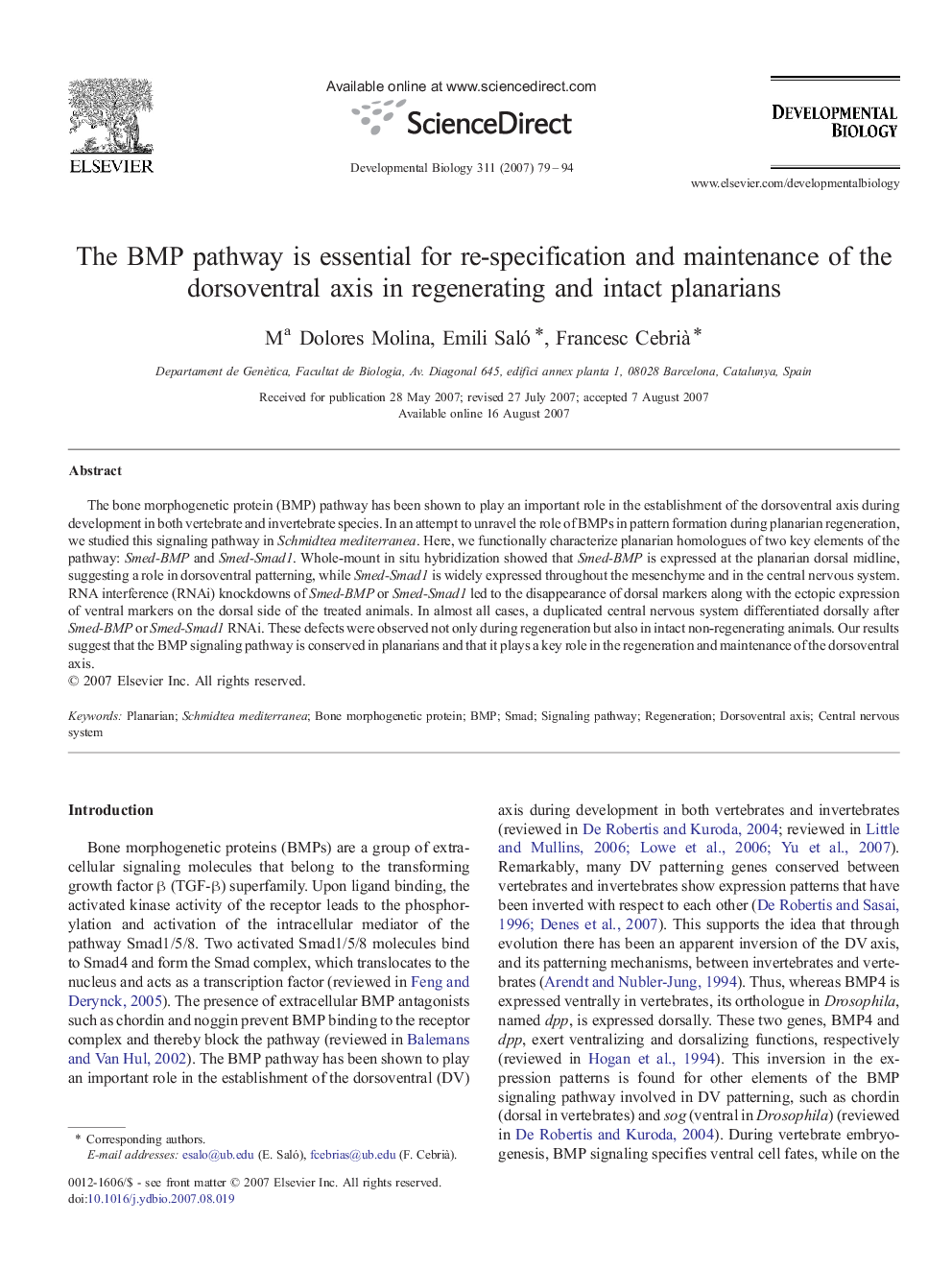| Article ID | Journal | Published Year | Pages | File Type |
|---|---|---|---|---|
| 2174849 | Developmental Biology | 2007 | 16 Pages |
The bone morphogenetic protein (BMP) pathway has been shown to play an important role in the establishment of the dorsoventral axis during development in both vertebrate and invertebrate species. In an attempt to unravel the role of BMPs in pattern formation during planarian regeneration, we studied this signaling pathway in Schmidtea mediterranea. Here, we functionally characterize planarian homologues of two key elements of the pathway: Smed-BMP and Smed-Smad1. Whole-mount in situ hybridization showed that Smed-BMP is expressed at the planarian dorsal midline, suggesting a role in dorsoventral patterning, while Smed-Smad1 is widely expressed throughout the mesenchyme and in the central nervous system. RNA interference (RNAi) knockdowns of Smed-BMP or Smed-Smad1 led to the disappearance of dorsal markers along with the ectopic expression of ventral markers on the dorsal side of the treated animals. In almost all cases, a duplicated central nervous system differentiated dorsally after Smed-BMP or Smed-Smad1 RNAi. These defects were observed not only during regeneration but also in intact non-regenerating animals. Our results suggest that the BMP signaling pathway is conserved in planarians and that it plays a key role in the regeneration and maintenance of the dorsoventral axis.
